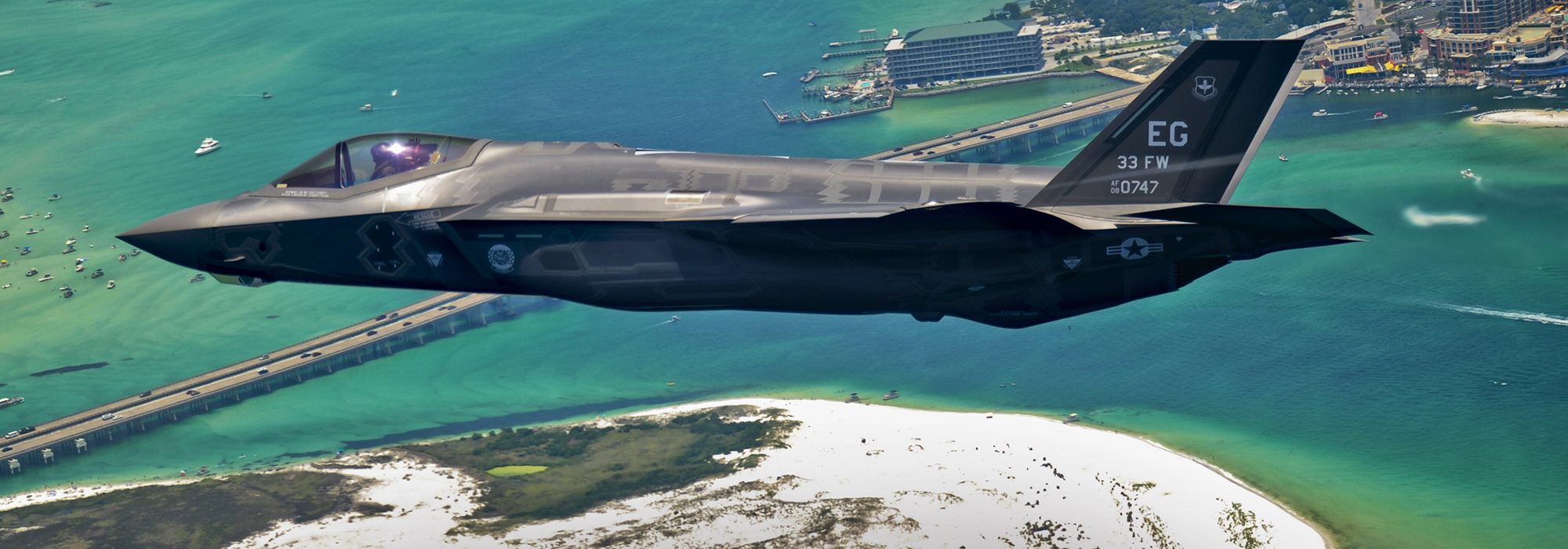Undefeated
His was a certified “rags-to-riches” story, a colorful tale of early misfortune, unexpected good luck, hard work, and redemption.
This was the life story of Lt. Col. Frederick Irving Eglin, namesake of Eglin AFB, Fla., which was so named soon after Eglin perished in a 1937 aircraft crash.
“Fritz” Eglin—no one used his given names—was born in New York City. His parents died when he was still a small child. In and out of orphanages, he survived the mean Bowery streets and went to high school, but did not graduate.
Eglin, however, was a gifted athlete; he caught the eye of an alum of Wabash College, who got him into the sports-crazy school in Crawfordsville, Ind. Eglin received a train ticket. It was enough.
He arrived destitute, with no money, few clothes, and no friends. He began as a “special student,” because he lacked a high school diploma. Yet he soon got a job and hit the books, hard.
He began to excel in the classroom. Also, Eglin starred in varsity football, basketball, and baseball. In his junior year, he was elected class president. He graduated with honors and became the school’s athletic director.
Yet Eglin was restless. In school, he had enlisted in the National Guard and was called to federal service for a stint on the Mexico border. The U.S. entered World War I in April 1917, and Eglin was immediately commissioned and sent off to pilot school.
Eglin was awarded wings and a regular commission in the Air Service. In the war years, he was an instructor pilot. Post-war, he commanded air squadrons in the Philippines and Stateside.
Eglin was going places. He impressed all as a serious, stoic officer, with a penetrating gaze, and he dressed immaculately.
Eglin rose to become commander at the Advanced Flying School at Kelly Field, Tex. He went on to study at the Air Corps Tactical School and Command and General Staff College. Eglin was promoted to lieutenant colonel and assigned to GHQ Air Force, the Army Air Corps’ principal combat arm.

Not long after, Eglin’s luck ran out. On Jan. 1, 1937, he was flying an A-17 attack bomber from Langley Field, Va., to Maxwell Field, Ala. His flight path took him into heavy rain and fog. Eglin could not have known it, but he was headed straight for the 2,407-foot peak of Cheaha Mountain, highest in Alabama.
The A-17 crashed through a half-mile of tree tops, slammed into the mountain, and burst into flames. Eglin died instantly, as did a backseater, Army Lt. Howard E. Shelton. Eglin’s remains are interred at Arlington National Cemetery in Virginia.
Because of Eglin’s reputation as a top pilot and the tragic nature of his passing, the Air Corps moved swiftly to honor him, naming a Florida base “Eglin Field” in August 1937.
Today, Eglin is the focal point of USAF armament development. The 96th Test Wing at Eglin is the test and evaluation center for Air Force air-delivered weapons, navigation, and guidance systems. Also at Eglin: the 33rd Fighter Wing and 58th Fighter Squadron, two F-35 Lightning II outfits.
Frederick Irving Eglin

- Born: Feb. 23, 1891, New York, N.Y.
- Died: Jan. 1, 1937, Calhoun County, Ala.
- Education: Wabash College, Crawfordsville, Ind.
- Occupation: U.S. military officer
- Services: Indiana National Guard; US Army—Signal Corps; Air Service; Air Corps
- Main Eras: World War I, Interwar Period
- Years Active: 1911-1937
- Final Grade: Lieutenant Colonel
- Interred: Arlington National Cemetery
Eglin Air Force Base

- State: Florida
- Nearest City: Valparaiso
- Area: 725 sq mi / 464,000 acres
- Status: Open, operational
- Opened as Valparaiso Bombing/Gunnery Base: June 14, 1935
- Renamed Eglin Field: Aug. 4, 1937
- Renamed Eglin Field Military Reservation: Oct. 1, 1940
- Renamed Eglin Field: Dec. 28, 1944
- Renamed Eglin Air Force Base: June 24, 1948
- Current owner: Air Force Materiel Command
- Former owners: Air Corps Training Center; Southeast Air Corps Training Center; Fourth Corps Area, U.S. Army; AAF Proving Ground Command; Air Proving Ground Command; Air Materiel Command; Air Research and Development Command; Air Force Systems Command
- Home of: 96th Test Wing; 33rd Fighter Wing; 58th Fighter Squadron; 53rd Wing; Armament Directorate
